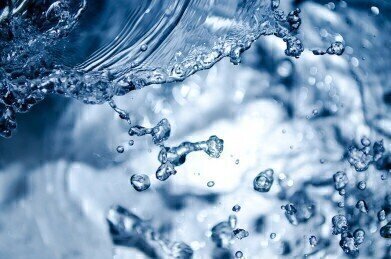Water/Wastewater
8 Different Parameters for Water Monitoring
Jul 25 2021
As the substance which sustains all lifeforms on planet Earth, there’s no resource more precious than water. With the global population expected to swell to almost 10 billion by 2050, ensuring there is enough water for everyone is a priority concern. Equally important, however, is guaranteeing the quality of that water to ensure it is free from contaminants and bacteria.
Thankfully, water quality monitoring has changed significantly over time. The rapid advancement of technology in the last few decades has endowed us with the capability to measure an increasing number of parameters related to water quality, meaning we can understand more about what we are putting into our bodies. Here’s a rundown of some of the most important parameters when it comes to monitoring water:
- Ammonia. A form of nitrogen, ammonia is a naturally occurring element which fuels plant growth. It’s a key component of many agricultural fertilisers and during extreme weather events, run-off can cause it to leach into bodies of water.
- Blue-green algae. One of the most common and concerning symptoms of excessive levels of ammonia is blue-green algae. These algal blooms feed upon the nutrients in the water and proliferate rapidly, consuming oxygen supplies and depriving other organisms of sunlight.
- Conductivity. As the measure of a liquid’s ability to conduct an electrical current, conductivity can be used to assess the quality of a water sample, as well as in the detection and quantification of any solutions or contaminants contained within it.
- Dissolved oxygen. Dissolved oxygen (DO) occurs when oxygen and water are allowed to mix. This primarily happens through the natural process of photosynthesis, but can also be influenced by a variety of other factors. DO levels can give insight on the quality of water.
- Hydrocarbons. As a key component of oil, hydrocarbon monitoring is of increasing importance in sites located near to oil rigs, marinas and shipping channels. Oil spills and leakages can greatly impact the surrounding wildlife in a negative manner.
- Nitrate. Similar to ammonia, nitrate is often used in the agricultural industry to fertilise crops. It took can play havoc with the natural rhythms of an ecosystem, while it can also cause significant issues for human health – especially in children.
- pH. As one of the most important parameters for water quality monitoring, a very high or low pH level can indicate the presence of pollutants in a water source. A pH imbalance can be damaging or even deadly to the florae and faunae living in the environment.
- Temperature. As one of the most basic properties of water, temperature can act as corroborating evidence for other parameters and as an indicator of thermal loading or discharge. Many aquatic organisms are also highly sensitive to fluctuations in temperature.
Although the above list is by no means a comprehensive one when it comes to the parameters that can be analysed in a water sample, it does give you an idea of what is available. For more information on the apparatus capable of quantifying the levels of those metrics and more, please check out our Buyers Guide for water quality monitoring products.
Digital Edition
IET 34.2 March 2024
March 2024
Gas Detection - Biogas batch fermentation system for laboratory use with automatic gas analysis in real time Water/Wastewater - Upcycling sensors for sustainable nature management - Prist...
View all digital editions
Events
Apr 22 2024 Hannover, Germany
Apr 22 2024 Marrakech, Morroco
Apr 23 2024 Kuala Lumpur, Malaysia
Apr 23 2024 Kintex, South Korea
Apr 23 2024 Edmonton, AB, Canada


















